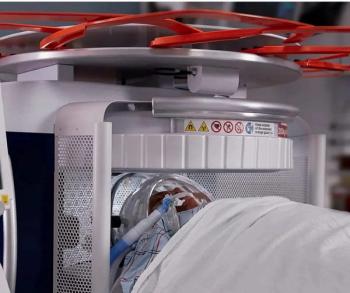
Dose concerns sway use of MR, CT in colon, brain
Among European radiologists, concerns about ionizing radiation exposure give MR an edge in specific applications, including colorectal cancer screening in younger patient populations. But in the U.S., such concerns have not dampened enthusiasm for CT, particularly in neurovascular studies.
Among European radiologists, concerns about ionizing radiation exposure give MR an edge in specific applications, including colorectal cancer screening in younger patient populations. But in the U.S., such concerns have not dampened enthusiasm for CT, particularly in neurovascular studies.
Dr. Boris Bassler and colleagues in the department of diagnostic and interventional radiology at the Klinikum Ludwigshafen, Germany, assessed 100 patients with dark lumen MR colonography at 1.5T. Compared with colonoscopy, MRC's sensitivity for adenomatous polyps ranging in size from 6 mm to 9 mm was 84%, and 100% for those larger than 9 mm.
Sensitivity for adenomatous lesions smaller than 6 mm was less than 20%, and MRC did not detect hyperplastic polyps. Researchers are not deterred.
"Many radiologists aren't sure if polyps under 6 mm are worth worrying about, so why should we?" Bassler said at the 2005 RSNA meeting.
Dr. Bettina Saar and colleagues at the University of Bern assessed dark lumen MRC at 3T with 23 patients previously referred for colonoscopy. Although they could not successfully translate all of the features of 1.5T into 3T, researchers found that the stronger magnetic field improves the detection of colorectal lesions. They also found that contrast enhancement and the digital subtraction of images could help lesion characterization.
A related debate at the RSNA meeting suggests that U.S. radiologists are less worried than Europeans about radiation exposure.
The issue arose briefly at only three points in a 30-minute debate between Dr. Brian C. Bowen, director of MR clinical research at the University of Miami, and Dr. Charles (Chip) Truwit, radiology chair at Hennepin County Medical Center in Minneapolis. In arguments favoring MRA, Bowen wondered if radiologists should reconsider the safety of multislice CTA for serial studies if the number of detectors and radiation exposure continue to increase.
Speaking for CTA, Truwit admitted that doubling imaging frequency with serial workups doubles the radiation exposure. As an aside, he mentioned that brain perfusion studies with MSCT can involve 10 times as much exposure as a typical CT brain scan. He noted a report of hair loss among patients who underwent the procedure in Japan.
For these two American radiologists, the preference for CTA is influenced by efficacy and imaging quality. MRA has advantages for evaluating the complex vascular region of the head and neck. It can better visualize the carotid dissection where distortions of the arterial lumen and the hyperintensity associated with subtle features, such as intermural hematoma, can be appreciated, Bowen said. Both debaters preferred MRA for assessing coiled aneurysms.
For other neurovascular applications, CTA is the favored tool. In the emergency room at the Hennepin County Medical Center, it is part of the triage protocol for acute stroke. CTA overshadows MRA for aneurysm and dissection assessments.
Newsletter
Stay at the forefront of radiology with the Diagnostic Imaging newsletter, delivering the latest news, clinical insights, and imaging advancements for today’s radiologists.



























